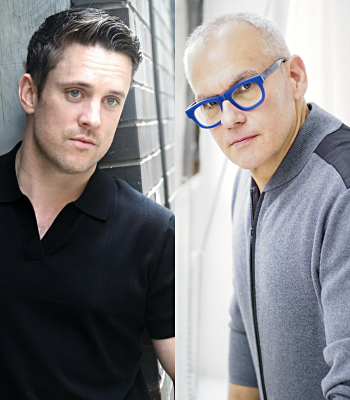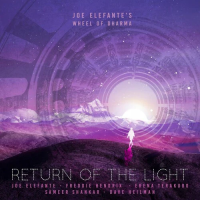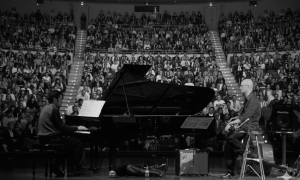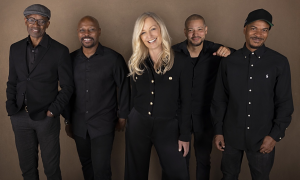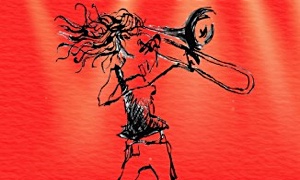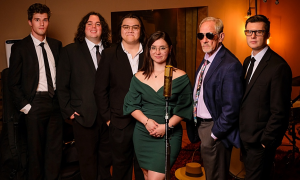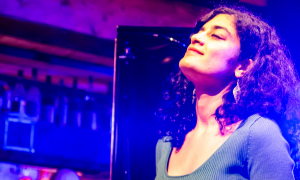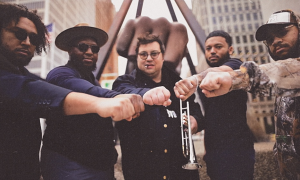LONDON After years of scraping by on a pittance from designing record covers for indie labels, Barney Bubbles had turned 40 and needed to make some money. He did the rounds of the big London record companies, only to be told by several executives that they had met with younger designers who were passing off his work as their own.
Barney Bubbles, the subject of a new book, is largely forgotten today but designed influential record covers in the 1970s and 1980s for, among others, Ian Dury and the Blockheads. Shameful though that was, it was not entirely surprising. Shy, introspective and fragile, Barney Bubbles shunned publicity and seldom signed his designs. On the rare occasions that he did, it was mostly under an alias. He credited himself on one record sleeve by drawing a dog, and cited his tax code on another. When the magazine The Face asked him for a portrait to illustrate the only interview he ever did, in 1981, he gave them fragments of different photographs.
Isolated from the design industry during his lifetime, Bubbles has often been ignored by it since he committed suicide in 1983 at 41. Yet his lusciously witty artwork for bands like Hawkwind, Elvis Costello and the Attractions, the Damned, and Ian Dury and the Blockheads has made him a hero to young designers. His designs are now celebrated in a book, Reasons to Be Cheerful: The Life and Work of Barney Bubbles, by Paul Gorman (published in Britain by Adelita and available on Amazon.com).
Its an odd choice of title. For starters, Bubbles didnt design the cover of its inspiration, the 1979 Ian Dury single Reasons to Be Cheerful, Part 3. That was the work of the Pop artist Peter Blake. Then theres the question of whether cheerful is an appropriate description of someone who battled depression and chose to end his life. Yet Barney Bubbles did have a cheerful side.
In the book his gentle charm is remembered fondly by friends and colleagues. And despite his fragility, he was a prolific designer who produced a body of work that seems as joyous, playful and rich in meaning now as it did when he created it.
Beginning with his childhood in a dreary London suburb, where he was born Colin Fulcher (he later changed his name legally), the book traces Bubbless career from the psychedelic light shows he created in the 1960s to an ill-fated attempt to reinvent himself as an artist. But Reasons to Be Cheerful is dominated by Bubbless record covers from the 1970s and early 80s lasting images for fleeting times, as a friend, the science fiction writer Michael Moorcock, described them.
It may be hard for anyone weaned on tiny iPod images to appreciate how evocative record covers were in the 1970s. For many fans the sleeve of their favorite album or single came to mean as much as the music, and were often the first images to move them emotionally. For graphic designers like Bubbles, the 12-inch square of an LP was a canvas on which they could express their own ideas as well as the music.
He certainly was not the first. Reid Miles created dazzling combinations of type and photography for the American jazz label Blue Note in the late 1950s. In the 60s it became fashionable for bands to commission covers from artists. The Beatles worked with Peter Blake and Richard Hamilton, the Rolling Stones with Andy Warhol and Robert Frank. By the end of the decade, graphic designers like Wes Wilson, Alton Kelley and Stanley Mouse were stalwarts of the San Francisco psychedelic music scene. Bubbles played a similar role in London, alongside Storm Thorgerson, Aubrey Powell and Roger Dean.
His early work for underground bands, and for magazines like Oz and Frendz, was described by the designer John Coulthart as cosmic Art Nouveau. Like other counterculture designers, Bubbles combined the vernacular symbolism of Pop Art with the decorative curves of Alphonse Muchas paintings.
But his work was unusually ambitious in its scale and intricacy. He designed every visual element of Hawkwinds gigs, down to the drum kits, and his sleeve for the bands 1971 album, In Search of Space, unfolded into an elaborate cutout of a hawk.
When depression struck, he left London and in 1976 moved to rural Ireland. A friend, Jake Riviera, sent telegrams begging him to come back as the designer of his new record label, Stiff, home to Elvis Costello and Ian Dury, among others. There was no reply, but one day Bubbles appeared at Stiffs office and commandeered the coal cellar as a studio.
He developed a radically different style there, reflecting the urgency of Stiffs post-punk acts. He reinterpreted Constructivist and early Modernist images in striking collages, which were less decorative than his earlier designs.
Barney Bubbles, the subject of a new book, is largely forgotten today but designed influential record covers in the 1970s and 1980s for, among others, Ian Dury and the Blockheads. Shameful though that was, it was not entirely surprising. Shy, introspective and fragile, Barney Bubbles shunned publicity and seldom signed his designs. On the rare occasions that he did, it was mostly under an alias. He credited himself on one record sleeve by drawing a dog, and cited his tax code on another. When the magazine The Face asked him for a portrait to illustrate the only interview he ever did, in 1981, he gave them fragments of different photographs.
Isolated from the design industry during his lifetime, Bubbles has often been ignored by it since he committed suicide in 1983 at 41. Yet his lusciously witty artwork for bands like Hawkwind, Elvis Costello and the Attractions, the Damned, and Ian Dury and the Blockheads has made him a hero to young designers. His designs are now celebrated in a book, Reasons to Be Cheerful: The Life and Work of Barney Bubbles, by Paul Gorman (published in Britain by Adelita and available on Amazon.com).
Its an odd choice of title. For starters, Bubbles didnt design the cover of its inspiration, the 1979 Ian Dury single Reasons to Be Cheerful, Part 3. That was the work of the Pop artist Peter Blake. Then theres the question of whether cheerful is an appropriate description of someone who battled depression and chose to end his life. Yet Barney Bubbles did have a cheerful side.
In the book his gentle charm is remembered fondly by friends and colleagues. And despite his fragility, he was a prolific designer who produced a body of work that seems as joyous, playful and rich in meaning now as it did when he created it.
Beginning with his childhood in a dreary London suburb, where he was born Colin Fulcher (he later changed his name legally), the book traces Bubbless career from the psychedelic light shows he created in the 1960s to an ill-fated attempt to reinvent himself as an artist. But Reasons to Be Cheerful is dominated by Bubbless record covers from the 1970s and early 80s lasting images for fleeting times, as a friend, the science fiction writer Michael Moorcock, described them.
It may be hard for anyone weaned on tiny iPod images to appreciate how evocative record covers were in the 1970s. For many fans the sleeve of their favorite album or single came to mean as much as the music, and were often the first images to move them emotionally. For graphic designers like Bubbles, the 12-inch square of an LP was a canvas on which they could express their own ideas as well as the music.
He certainly was not the first. Reid Miles created dazzling combinations of type and photography for the American jazz label Blue Note in the late 1950s. In the 60s it became fashionable for bands to commission covers from artists. The Beatles worked with Peter Blake and Richard Hamilton, the Rolling Stones with Andy Warhol and Robert Frank. By the end of the decade, graphic designers like Wes Wilson, Alton Kelley and Stanley Mouse were stalwarts of the San Francisco psychedelic music scene. Bubbles played a similar role in London, alongside Storm Thorgerson, Aubrey Powell and Roger Dean.
His early work for underground bands, and for magazines like Oz and Frendz, was described by the designer John Coulthart as cosmic Art Nouveau. Like other counterculture designers, Bubbles combined the vernacular symbolism of Pop Art with the decorative curves of Alphonse Muchas paintings.
But his work was unusually ambitious in its scale and intricacy. He designed every visual element of Hawkwinds gigs, down to the drum kits, and his sleeve for the bands 1971 album, In Search of Space, unfolded into an elaborate cutout of a hawk.
When depression struck, he left London and in 1976 moved to rural Ireland. A friend, Jake Riviera, sent telegrams begging him to come back as the designer of his new record label, Stiff, home to Elvis Costello and Ian Dury, among others. There was no reply, but one day Bubbles appeared at Stiffs office and commandeered the coal cellar as a studio.
He developed a radically different style there, reflecting the urgency of Stiffs post-punk acts. He reinterpreted Constructivist and early Modernist images in striking collages, which were less decorative than his earlier designs.






